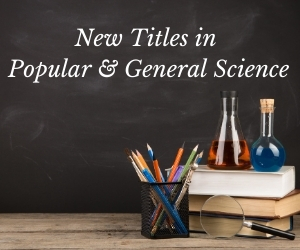On the special occasion of the 125th anniversary in 2012 of the PTB and its predecessor PTR, this second edition is presented (in CD) with a new chapter on the current impact of quantum standards.
In 1887, the Physikalisch-Technische Bundesanstalt (PTB) was originally founded as the Physikalisch-Technische Reichsanstalt (PTR) in Berlin in order to promote basic research in physics. It subsequently developed into the largest research center worldwide as a place where scientists could concentrate exclusively on their research subject, and served as a model for similar institutes established in other countries.
Within a very short time, the PTR produced extremely important scientific results that cemented its international position at the top, such as Max Planck's radiation law and energy quantization theory as well as Walther Meissner's discovery of the Meissner effect which represented a turning point in the field of superconductivity. This book describes the scientific and industrial milieu of the time, and explains in detail the role of the key people, including Albert Einstein's involvement with the PTR. A brief discussion on how the PTR was affected by the Nazi dictatorship in Germany is also given.
Sample Chapter(s)
Chapter 1: The Foundation and the Key Role of Werner Siemens (174 KB)
Contents:
- The Foundation and the Key Role of Werner Siemens
- Some Memoranda at the Beginning
- The Start under President Hermann von Helmholtz
- The Institute as a Model
- The Optical Laboratory and the Birth of Quantum Theory
- The Low-Temperature Laboratory and the Discovery of the Meissner Effect
- The Chemical Laboratory and the Discovery of New Elements
- The Laboratory for Radioactivity
- The Imperial Institute and Albert Einstein
- Counting and Measuring — Quantum Statistics and Quantum Standards
- Fundamental Constants — the Best Information on Nature Available
- The Meter Convention for the Global Consistency of Measurements
- The Presidents of the Institute until 1933
- The Institute under the Nazi Dictatorship and a New Beginning
- The Electromagnetic Quantum Triangle — Quantum Standards from the Perspective of Ohm's Law
Readership: General readers; students and scientists in physics, chemistry and related areas; academics interested in the history of science.
“Presenting a great institution, or indeed expounding a great scientific theme in this way, is indeed a very valuable approach to foster the history of a field, at least when the expected readership, such as the one of the present book, is composed mostly of professionals of the discipline ... The book by Huebener and Lübbig is an enjoyable read and the authors have indeed succeeded in achieving their promise.”
IL Nuovo Saggiatore
“This is a very interesting book. The book provides a very enjoyable reading experience. I highly recommend it to everyone who is active in science and to readers who are interested in its development.”
Prof. Dr. Vladimir Kresin
Lawrence Berkeley Laboratory
University of California, Berkeley
Reviews of the First Edition:
“With the use of many original documents the authors create a very lively picture of the highly scientific and pioneering climate at PTR which actually takes the reader back to this fascinating area.”
Professor Dr Ernst O Göbel
President of Physikalisch-Technische Bundesanstalt
“This book is primarily interesting because it is also a history of much of 20th-century physics, since much of this was developed by people closely tied to Physikalisch-Technishe Reichsanstalt.”
Choice
“It offers a useful overview of the fate of the PTR after 1919, and suggests that a sequel to Cahan's study of the Reichsanstalt's earlier development would be well worth undertaking.”
ISIS
Rudolf Huebener earned his PhD in physics in 1958 from the University of Marburg. After holding research positions in Karlsruhe and New York he worked 12 years at the Argonne National Laboratory in Illinois, USA. In 1974 he accepted a professorship of Experimental Physics at the University of Tübingen, which he kept until his retirement in 1999. For his scientific achievements he was awarded the Max Planck Research Prize in 1992 and the Cryogenics Prize in 2001. Rudolf Huebener published several books, for example "Magnetic Flux Structures in Superconductors", 2nd edition (2001), "Electrons in Action" (2005), and "Walther Nernst: Pioneer of Physics and of Chemistry" (2007 together with H-G Bartel).
Heinz Luebbig earned his PhD in mathematical physics from the Technical University Berlin and spent, after a longer term of teaching theoretical physics, most of his CV at the Physikalisch-Technische Bundesanstalt; director and professor responsible for theoretical foundation of metrology. Among his main objectives there have been the topology ofmacroscopic quantum interference in superconducting systems, and the inverse problem of pattern recognition due to biomedical potentials. He is co-editor of an international standard series of superconducting interference devices (1976 – 1991), and has edited a book on the inverse problem (1994). His present field of interest is quantum metrology on the basis of fundamental constants.
Sample Chapter(s)
Chapter 1: The Foundation and the Key Role of Werner Siemens (174 KB)
CD-ROM
9789814390507SM01.iso (36566 KB)
Access to the above content is automatically assigned if you purchase the ebook online directly via www.worldscientific.com
Your access token would have been activated under your username when you purchased the ebook directly from WSPC website OR when you click on the URL activation link provided in the print or ebook. For subsequent access to the supplementary materials, please simply log in with the same username and you will be able to access.
If you have purchased the print copy of this book or the ebook via other sales channels, please email sales@wspc.com.sg, indicating your purchase information, in order for online access to be set up.
For any enquiries on access issues, please email sales@wspc.com.sg
























